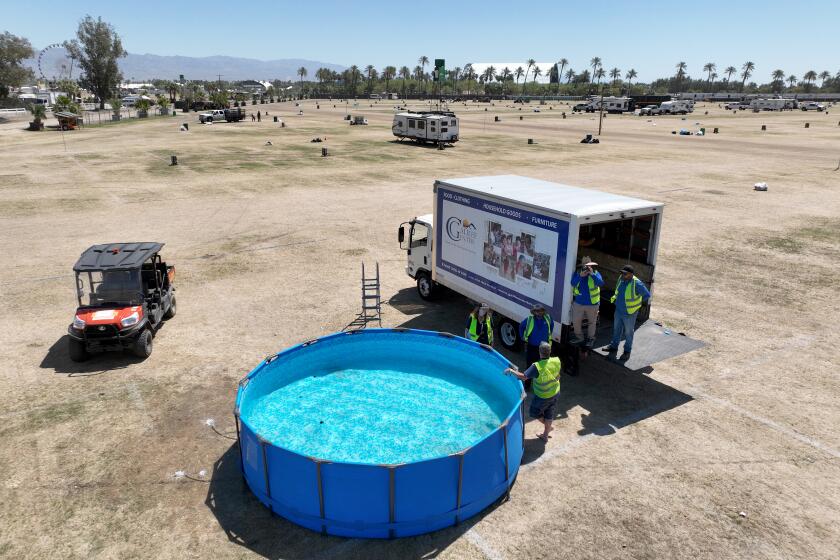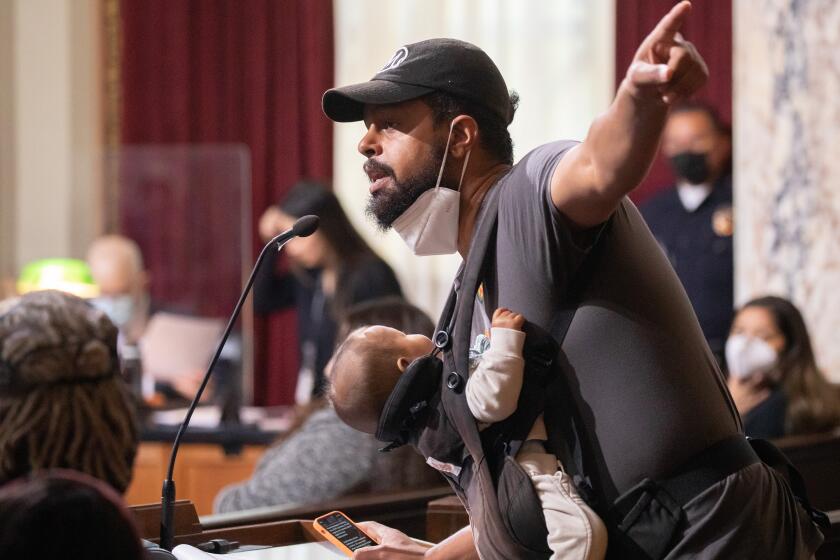Pact May Ease Drilling Ban Off California
The Interior Department and key California legislators have agreed on a plan to ease a four-year congressional ban on oil exploration off the California coast, allowing drilling in about 1,350 of the 58,000 square miles of ocean bottom where it is now prohibited, Reagan Administration and oil industry sources said Monday.
Among the areas to be opened would be parts of the Santa Maria Basin off Point Conception north of Santa Barbara, where extensive drilling already is proceeding.
Exploration essentially would be banned until after the year 2000 in the remaining areas.
Forbidden Areas
For instance, there could be no drilling in Santa Monica Bay, in military sites off Southern California, the Bodega Basin off Central California and other sites off Big Sur, the Farallon Islands and Point Reyes.
The proposal, drafted in talks among Interior Secretary Donald P. Hodel and five California legislators, was to be presented to the state’s congressional delegation early today.
If approved as expected, the agreement could head off a critical vote scheduled in a House appropriations subcommittee today on whether to renew the California oil exploration moratorium for a fifth year. The subcommittee is expected to postpone the vote if the state delegation agrees to support the compromise.
The Administration and the oil industry, arguing that the four-year ban has shielded some of the nation’s most valuable remaining oil fields from production, had lobbied vigorously to lift it.
The reported accord appeared more satisfactory to environmentalists than to industry.
“If it’s what we’ve heard, the industry is extremely upset,” said Marc Himmelstein, an official with the American Petroleum Institute, a trade group. “It’s not only a poor deal, but it probably has some substantial impacts on the nation’s energy security as well.”
Himmelstein said the industry would ask Congress to oppose the agreement, saying it “locks up 99%” of the coastline covered by the drilling moratorium.
Environmental group officials said they had not seen the draft agreement and could not comment officially. But one said the areas selected for protection appear to form the basis for a “reasonable” compromise.
Optimistic Sources
As proposed Monday, both Hodel and California legislators would submit the draft agreement to interested parties in coastal cities, labor, industry and the environmental community. If the draft wins broad support, it would later be written into law.
Sources close to the monthlong negotiations that produced the proposal were optimistic that it would win public backing. “The process does not end tomorrow (with the California congressional delegation’s approval),” one said Monday. “But if things go well, it’s pretty close to ending.”
The proposal was drafted in meetings among Hodel and Sens. Pete Wilson (R-Calif.) and Alan Cranston (D-Calif.), and Reps. Leon E. Panetta (D-Carmel Valley), Bill Lowery (R-San Diego) and Mel Levine (D-Santa Monica). Both sides retain the right to back out of the compromise if it fails to win support outside Congress.
The agreement would give both sides important victories: for the legislators, broad protection of the state’s sensitive coastline; for Hodel, a long-pledged end to the ban on oil exploration.
Terms of Compromise
Until 2000, the proposal would confine leasing activity to about 150 of the 6,400 ocean-bottom tracts, each nine miles square, now covered by the drilling ban. Most of those tracts are said to be in the Elk River Basin off extreme Northern California as well as in the Santa Maria Basin north of Santa Barbara.
Industry interest in Elk River is muted, but the Santa Maria lands are thought to hold huge oil reserves. Much of the area was leased three years ago, and 14 drilling ships have worked the tracts since then. The California Coastal Commission approved the siting of six oil platforms in the area, and the first is to be erected within a year or two.
Exploration generally would be banned elsewhere, but one exploratory well would be allowed in each of three potentially productive areas: the Bodega Basin, the Point Arena Basin off Northern California and the Santa Cruz Basin off the state’s central coast. None of the wells would be closer than 18 miles to shore.
More to Read
Start your day right
Sign up for Essential California for news, features and recommendations from the L.A. Times and beyond in your inbox six days a week.
You may occasionally receive promotional content from the Los Angeles Times.






